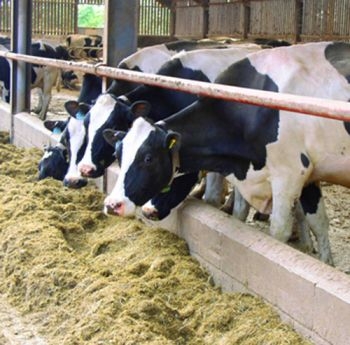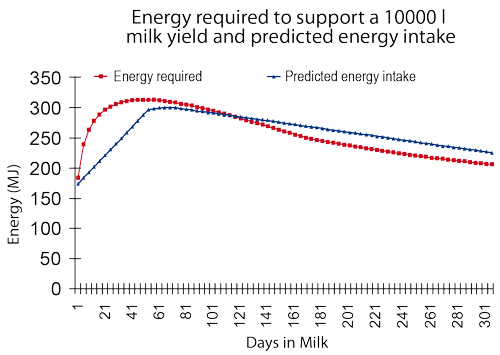
Fertility and Body Condition Score: Negative Energy Balance
A cow in NEB has to find the energy to meet the deficit from its body reserves.
Thus cows in NEB tend to lose body condition and liveweight, with cows that are more energy deficient tending to lose weight and condition at a faster rate.
Nutritional influences on fertility are multi-factorial and complex and may occur at several stages of the reproductive cycle.
Research from the USA suggests that as the scale of NEB increases, the interval to first ovulation increases along with a significantly reduced first insemination pregnancy rate.
EFFECTS OF NEGATIVE ENERGY BALANCE
Underfeeding is generally believed to:
delay puberty in heifers;
delay oestrus/ovulation after calving;
reduce pregnancy rates in early lactation.
follicle growth;
corpusluteum (CL) function;
oocyte quality;
uterine environment;
embryosurvival and growth.
In high yielding cows, energy intake will not meet energy requirements in early lactation.
More specifically nutrition may influence:
Animals in NEB have a significantly increased risk of metritis and cystic ovaries as well as non-reproductive diseases such as mastitis and, lameness, which themselves indirectly affect fertility.
TIMING OF NEB
The largest NEB is likely to occur at around the same time as peak yield, i.e. anywhere between 1 and 8 weeks post calving.
The duration of NEB is varied.
Stable or increasing body condition typically returns by 8 to 12 weeks post calving.

EFFECTS ON THE REPRODUCTIVE PROCESS
Insulin and insulin-like growth factor(IGF-1):blood concentrations of these hormones decrease significantly in animals in NEB.
The nutrient requirements of the embryo are tiny.
Nutritional causes of poor fertility are due to effects on metabolic hormones.
Pituitary function - cows in NEB have a lower luteinising hormone (LH) concentration and reduced response to LH.
Ovarian activity- cows in NEB have fewer large follicles and fewer follicles ovulate resulting in poorer fertility.
Embryo survival- is reduced by energy deficiency. This is linked to effects on IGF-1, which alter the metabolic and secretory activity of the uterus. Most embryo loss occurs between 8 and 16 days after service, before the maternal recognition of pregnancy.
Progesterone concentration– is lower in cows in NEB and is associated with reduced reproductive performance.
CHANGES IN BLOOD METABOLITES
Examination of metabolites in blood or milk can be useful indicators of energy status. A range of tests (a metabolic profile) is more useful than a single test, and results from a group of cows is more useful than results from a single cow.
Glucose:a commonly used indicator of energy status but is very tightly controlled and changes in blood glucose are usually very small.
Non-esterified free fatty acids(NEFAs): is closely related to the rate of fat breakdown. Cows in more severe NEB have a higher concentration of NEFAs, a plasma concentration of >600|imol/l indicating severe NEB.
Beta-hydroxybutyrate (BHB):is produced when there is insufficient glucose to mobilise the products of fat breakdown. A plasma concentration of >0.9 mmol/l is usually taken as indicating significant energy deficiency.




